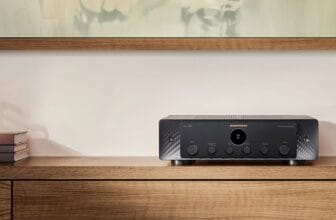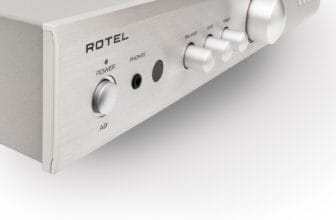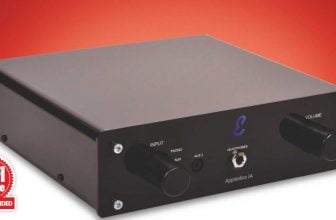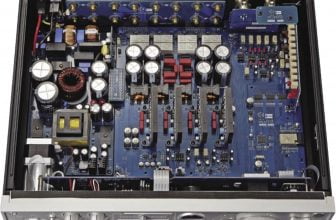D’Agostino Progression Integrated Review – Logical progression
Your lottery numbers have finally come up and you’ve been given free rein to buy your perfect amp. HFC dares to dream… Read our D’Agostino Progression Integrated Review.
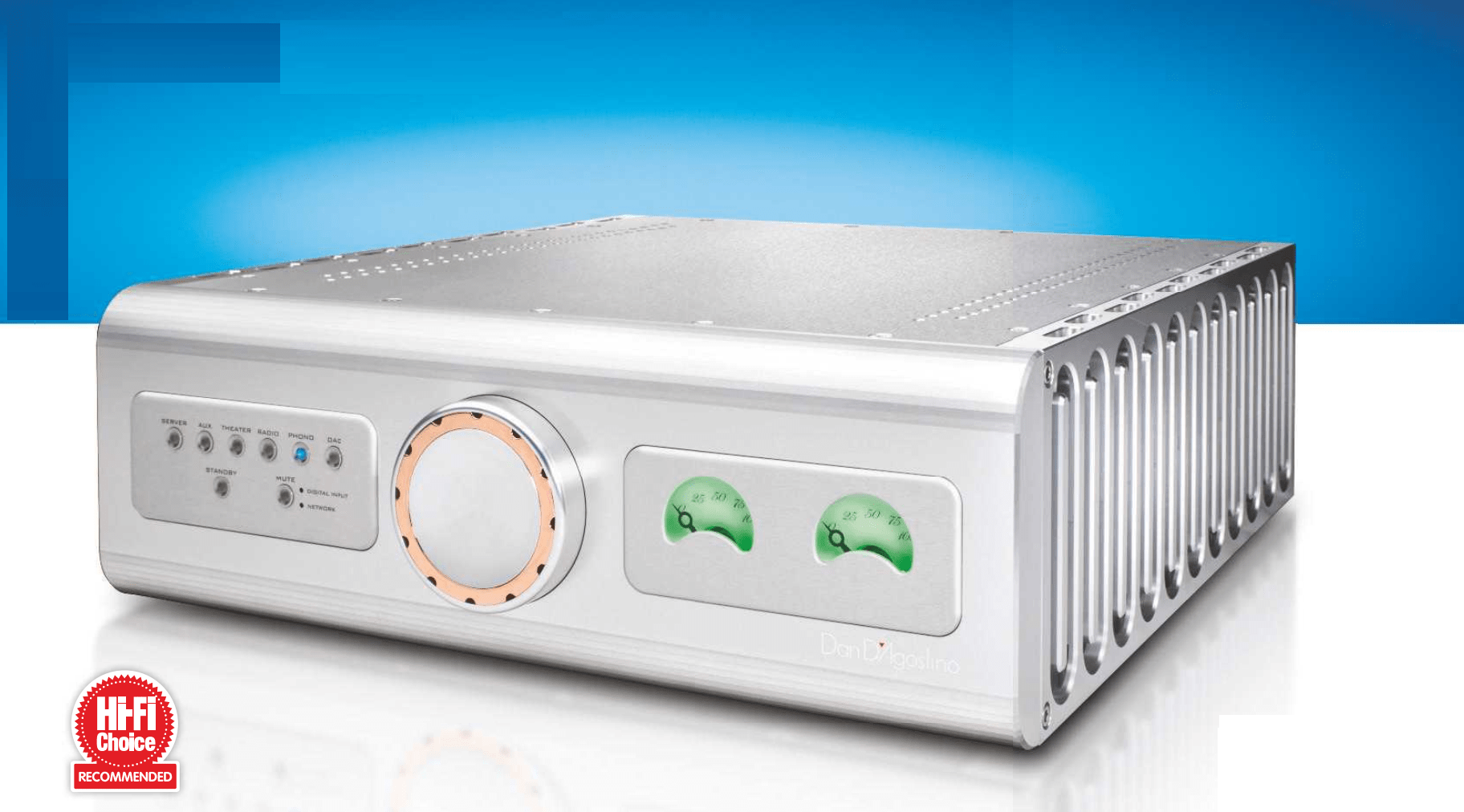
Whether it’s Ken Ishiwata, Bob Stuart, Karl-Heinz Fink or Allen Boothroyd, the hi-fi world is littered with big names that have left their own indelible mark on history. And when it comes to high-end amplifiers Dan D’Agostino is rightly recognised as one of the pioneers of the form, introducing a number of innovations over his 35-year reign initially with Krell before moving on to the company that uses his moniker.
With price tags routinely located terrifyingly north of £, D’Agostino products have traditionally been more suited to HFC’s sister mag the decidedly more upmarket Hi-Fi News, but then along came the Progression Integrated, the very definition of hi-fi exotica and so a perfect fit for these pages.
Obviously, the thick end of 20 grand is not the sort of disposable cash that the average HFC reader can throw at an amplifier without winning the lottery or inheriting from a long-lost millionaire relative, but let’s suspend disbelief for a moment and pretend that this is the sort of ear candy we can all afford to luxuriate in…
Typically for D’Agostino products, there’s nothing even remotely shy or
DETAILS
PRODUCT D’Agostino Progression Integrated
ORIGIN USA
TYPE Integrated amplifier
WEIGHT 26kg
DIMENSIONS (WxHxD) 432 x178 x 432mm
FEATURES
• Quoted power output: 200W (8ohm)
• Inputs: RCA line; MC phono stage; 4x balanced XLR; USB-B; optical; coaxial; Ethernet
• Outputs: balanced XLR pre out; 6.35mm headphone
DISTRIBUTOR Absolute Sounds Ltd.
TELEPHONE 0208 971 3909
WEBSITE dagostinoinc.com; absolutesounds.com
retiring about the Progression Integrated. This isn’t a product that disappears quietly into the background of its surrounding ancillaries. Instead it’s the sort of design that is sure to make it the centrepiece of any setup, despite the fact that by the company’s standards it’s is arguably less in your face, more subtle and – dare we say it – minimalist. One of the biggest issues of balancing form over function is that by their very necessity, amplifiers require multiple buttons, dials and switches for the numerous features that they have to offer, so the apparent equilibrium of ergonomics with restraint that’s on show here comes as a pleasant surprise.
The first tell-tale signs that this is a D’Agostino product come from the Breguet timepiece-inspired meters on the right-hand side of the fascia. These take on multiple roles providing valuable info on signal level, volume and balance settings. The sizeable rotary volume control with its stylish copper trim is a freely rotating attenuator offering step-wise increments of adjustment. Meanwhile the bank of buttons located to the left offer a colour-coded light show to indicate which source has been selected, standby and mute among other things. All in all, this is a beast that in operation feels every bit as good to use as it looks.
Though not as aesthetically pleasing perhaps, around the back the treats keep on coming. D’Agostino is infamous for his preference for balanced operation, so the sockets are dominated by a bank of XLR inputs alongside a preamp out. Those that want to hook up a turntable will need to invest in the supplementary £ phono board, which takes over one of the pair of single-ended RCA sockets to provide a moving-coil phono stage. Alternatively, or in addition to, you can also spring £ for the DAC module, which invites digital coaxial, optical, Ethernet, USB-B and a wi-fi antenna along to the party too – although the version you see before you is a pre-production sample and so remains untested. Completing the lineup is a 6.35mm headphone output – also located on the rear.
As both the founder and chief designer of Krell Industries up until 2009, it probably won’t come as too big a surprise to learn that everything that D’Agostino learnt at the company has been bought to the fore in the Progression Integrated. Consequently, the wired/wireless network audio board has been informed by the previous MLife integrated, although the Cypress wi-fi/Bluetooth remote interface has been separated on this occasion. Staying on the subject of the MLife, the aforementioned optional
The clarity dazzles, but more impressive still is the openness and soundstaging
network/digital audio board can only be navigated using the legacy iPhone, iPad or iPod Touch app (iOS 7.0 or later) that was originally developed for the MLife, and there is currently no Android alternative. This means that Apple fanboys will be able to operate input selection for optical, coaxial, USB and network as well as volume control, balance, mute, phase invert and standby. Otherwise, everything else is what you might call ‘pure D’Agostino’, from the relay-controlled stepwise volume mounted on the rear panel to the parallel complementary output devices (six pairs per channel) that are governed by the minimum negative feedback and powered by a very substantial PSU.
Our interest today centres on the Progression Integrated’s line-level performance – both single-ended and balanced. Consequently, an assortment of CD players and DACS along with two different phono stages are called into action during testing. The main speaker employed is Wilson Audio’s Sasha DAW, although the diminutive Falcon Acoustics LS3/5a is also given a whirl as its power handling remains its Achilles’ Heel. Fortunately, the amp’s rotary volume has a lot of travel when adjusting the levels for a precise setting, so the LS3/5a’s tweeters or woofers don’t end up being sacrificed in the process.
Sound quality
As it turns out, auditioning this rather unlikely pairing proves to be an inspired – even if we say so ourselves – move as the Falcons really sing. First up is a 12in single version of Aretha Franklin’s Respect – a song we know will fully exploit the LS3/5a’s raison d’etre: the reproduction of Franklin’s voice.
From the get-go, we make two glaring discoveries. The first is that the bolt-on phono stage is quite superb and should prove irresistible to those that lean towards a warm, valve-like performance. The second is that the Progression Integrated exchanges the traditional D’Agostino traits of an authoritarian, ‘you-will-sit- still-and-behave presentation’ with a far more relaxed showing.
Not that Respect is a tune to which we’re inclined to nod off, you understand. The impact of both Aretha’s undeniably powerful tonsils and the saxophone solo are indicative of the range of speed and power that are on show here – despite the fact that the overall level-related thrills
CONNECTIONS
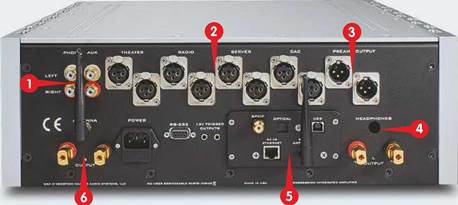
1) MC phono RCA line input
2) 4x balanced XLR line inputs
3) Balanced XLR pre output
4) 6.35mm headphone output
5) Coaxial, optical, USB-B and Ethernet digital inputs
6) 4mm speaker binding posts
IN SIGHT
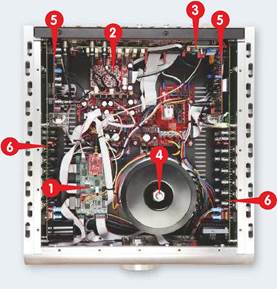
1) ‘Cypress’ wi-fi board
2) Digital/’streaming’ main board
3) MM/MC phono input stage
4) Huge Keen Ocean PSU transformer
5) Line/preamplifier circuit board(s)
6) Power amp module(s) with six pairs of devices per channel
are reined in by the use of a smaller two-way monitor that could never really hope to fully exploit the Progression’s undoubted hefty power. Detail is exceptional, with nuances like the accompanying ‘Whoops’ from backing singers Erma and Carolyn Franklin taking up their own distinct positions behind their sister’s lead.
Time to turn the wick up a touch, make that a lot. Out go the Falcons and in comes Wilson’s Sasha DAW. Boy, does this amp love to rock! Although, bizarrely, it does so with the sort of civility, that can feel confusingly out of place at times. Think Slash belting out a guitar solo, but decked head to toe in tweed and wearing a monocle. While it would be logical to assume that such qualities should ordinarily remain mutually exclusive, that’s not the case here. In other circumstances politeness would be a compliment reserved for chamber music and absolutely not for grinding soul, gurning heavy metal or sweaty disco. But the Progression Integrated amplifier does that whole D’Agostino shtick without ever seeming in any way over powering.
Next up, Otari’s MX5050 balanced- output-only open-reel is called into action for listening to Chasing The Dragon’s sampler on half-track, 15ips tape. The selection is a change of gear with mainly classical offerings, most notably a superb version of Mouret’s Rondeau – a brass performance that exploits the Progression Integrated’s speed, attack and dazzling command of transients. The clarity alone is enough to dazzle, but perhaps more impressive still is the level of openness and soundstaging.
You could, of course, argue that such tapes are designed to make everything sound better than it should, so it’s over to CD to counter open-reel’s unfair advantage. Imported at great cost from Japan, our Ultimate HQ/MQA disc of The Band belting out Up On Cripple Creek has a level of realism that almost matches the vinyl reissue. Levon Helm’s drumming sounds deliciously fat and rambunctious throughout, while the nasality of his vocals is ridiculously good.
By way of an admittedly unfair comparison, we opt to run the
The phono stage is irresistible to those that like warm, valvelike performances
Progression Integrated up against D’Agostino’s costlier Momentum Stereo. The former’s amplifier section is undoubtedly less bold and forceful than its pricier sibling, but the differences are impressively close. The Momentum offers a perceptible added measure of control and extension, but the Progression really isn’t far behind.
In fact it takes the subtlety of George Benson’s guitar work on The Other Side Of Abbey Road to show how two amplifiers from the same stable can sound different, yet share common ground. Considering that the Momentum will set you back far in excess of £, the fact that the Progression Integrated’s performance can be considered to be even in the same sonic ballpark underlines just
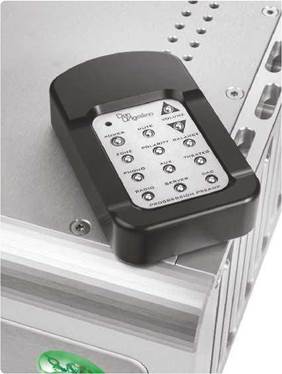
The chunky remote offers control of input, volume, mute, balance and polarity
how good it is and reveals that – in absolute relative terms – it can actually be considered something of a bargain. Now there’s something we never thought we’d say…
Conclusion
Typically high-powered bruisers such as this are defined by the way they belt out brutal, yet commanding performances with volume to spare, but the Progression Integrated thrashes such lazy preconceptions to one side. Free of fatigue-inducing nasties in the treble frequencies and partnered by the sort of rich and warm lower registers that are more commonly associated with valves, this is the very definition of a sonic iron fist in a velvet glove. Maybe it’s time to start putting more effort into getting those lottery numbers right
OUR VERDICT
How it compares
There are plenty of ways to blow £ on a high-end pre/ power amp. But integrateds? Not so many… The best cost-no-object amps are all heavyweights, with Musical Fidelity’s M8xi (HFC 465) leading the charge at 550W/8ohm for a relatively affordable £. Bluff exterior notwithstanding, it delivers music with a dexterity and fleetness of foot that utterly belies its bulk. You might also consider the fabulously solid Pass Labs INT-250, the Krell K-300i, the flagship Hegel H590 (HFC 449) or, from leftfield, the tube/solid-state Aesthetix Mimas and fully loaded L2i-2SE from Vinnie Rossi, respectively.


